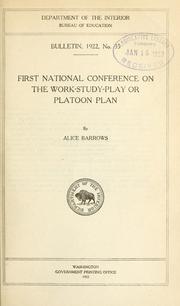Districts as the Engine of School Reform: Past and Present (Part 2)
Districts have again become the darlings of school reformers. Where once reformers, past and present, skipped back and forth lining up their cross-hairs on the best targets for improving schooling such as individual teachers and principals, whole schools, and districts, today’s school reformers generally target districts. Many reasons explain the shift to districts but one, in my opinion, that accounts for the current passion among self-proclaimed reformers to turnaround failing schools and a mediocre national system of K-12 education is the increased authority that state and federal officials have accumulated over time to make local decisions.
Historically, states have the constitutional duty to provide education. States created districts and delegated authority to run schools. U.S. education, then, has been a decentralized operation for two centuries. In the early 1930s, there were nearly 130,000 districts in 50 states. Since then, the trend has been to merge districts into larger ones (there are now 14,000 districts). Mergers continued and since the 1960s with the federal Elementary and Secondary Education Act, federal and state authority over district schools have become more and more centralized. State and the federal authorities now mandate what curriculum standards have to be taught in districts, what texts have to be used in classrooms, which tests must be given, what happens when students fail to perform satisfactorily on tests, and–increasingly–how content and skills should be taught. Oops! Did I forget that states (44 percent) and feds (nearly 10 percent) supply most funding for districts?
To state and federal officials, mandates, money, penalties for non-performance, and the stigma of shame are the primary levers to institute desired changes in districts from offering parents choices in charter schools to adopting Common Core standards to evaluating teachers on the basis of student test scores. Yet to these reform-driven officials, too many districts lack the political will and resolve to turn the corner on poor performance. Mandates, money, penalties, and shame seem to have little effect on persistently low-performing schools and districts.
What’s an eager state and federal official, armed with the authority to make rules and dispense funds to do when district inaction or minimal compliance occurs? One answer may be to look at districts, past and present, that have succeeded in turning themselves around, in adopting reforms that they worked at for years, and ask: how did they do it? What factors were common to them?
A recent article on Union City (NJ) does exactly that. David Kirp details what district officials in this largely immigrant and poor school system (10,300 students in 2013) did over a quarter-century–yes, 25 years–to make incremental changes from adding preschools to curriculum overhaul to a culture of learning and respect for community to, even new technologies. All of these changes were coordinated and eventually funded under the state Supreme Court’s Abbott decision. Stable leadership from school boards and superintendents over decades converted these changes into standard operating procedures. Current school chief is Stanley Sanger who has spent a decade as ssuperintendent after a career as social studies teacher, principal, and assistant superintendent–all in Union City. These incremental and steady changes accumulated into a success story, including the district’s one high school.
Push the rewind button and go back in time to 1907 in Gary (IN). A company town literally owned by U.S. Steel, the Gary school board appointed William Wirt superintendent; he served over 30 years. Influenced by the ideas of John Dewey and the emerging efficiency movement, Wirt introduced an innovative way of organizing schools, teaching, and learning for mostly immigrant students to work-study-and play called the Gary Plan or Platoon school. At a time when urban schools across the nation were looking for ways to solve the problems of slums, overcrowded schools, and how to teach immigrant children the Gary Plan offered solutions.
The innovation was introduced into reorganized schools holding children from kindergarten through the twelfth grade. Administrators divided each school’s students into two groups or “platoons.” One platoon would be in the classrooms or auditorium while the other would be in the basement where there were woodworking, printing, and other shops; upstairs in music, art, and play rooms; or outside on the playground. During the day, each platoon would change places, giving each child academic, practical, recreational, and aesthetic experiences while using the entire facility. While most urban elementary school children before World War I stayed the entire 6-8 hour school day in a self-contained classroom with one teacher, Gary pupils worked-studied-and played during an eight-hour day, even receiving released time for religious instruction. Adults used the school at night to take English courses and pick up other job skills.
Such a work-study-play-community school arrangement—a revolutionary shift in school organization and curriculum—made it possible to have many more students attend school–over 20,000 in the 1920s–since the schedule permitted all available space to be used by students during the day with adults taking courses at night. The Gary innovation spread swiftly across the nation but by the 1930s and the Great Depression had largely disappeared from the agendas of reform-minded policymakers.
In Part 3, I offer one more example of a district reform and then offer answers to the questions asked above: how did districts do it? What factors were common to them?
This blog post has been shared by permission from the author.
Readers wishing to comment on the content are encouraged to do so via the link to the original post.
Find the original post here:
The views expressed by the blogger are not necessarily those of NEPC.

